As we celebrate World Water Day, it’s crucial to recognize the importance of accelerating change to solve the water and sanitation crisis that affects millions of people worldwide. With this year’s theme focusing on the need for urgent action, the Water Governance Standard (WGS) emerges as a timely and innovative solution, particularly in rural India. This ground-breaking approach addresses the complex challenges of water scarcity and management by leveraging existing “water markets” and incentivizing communities to adopt sustainable water practices.
India, despite being a water-abundant nation, is facing a water crisis due to geographical constraints, poor management, and overdependence on groundwater. This crisis poses a significant threat to agricultural productivity and the livelihoods of millions
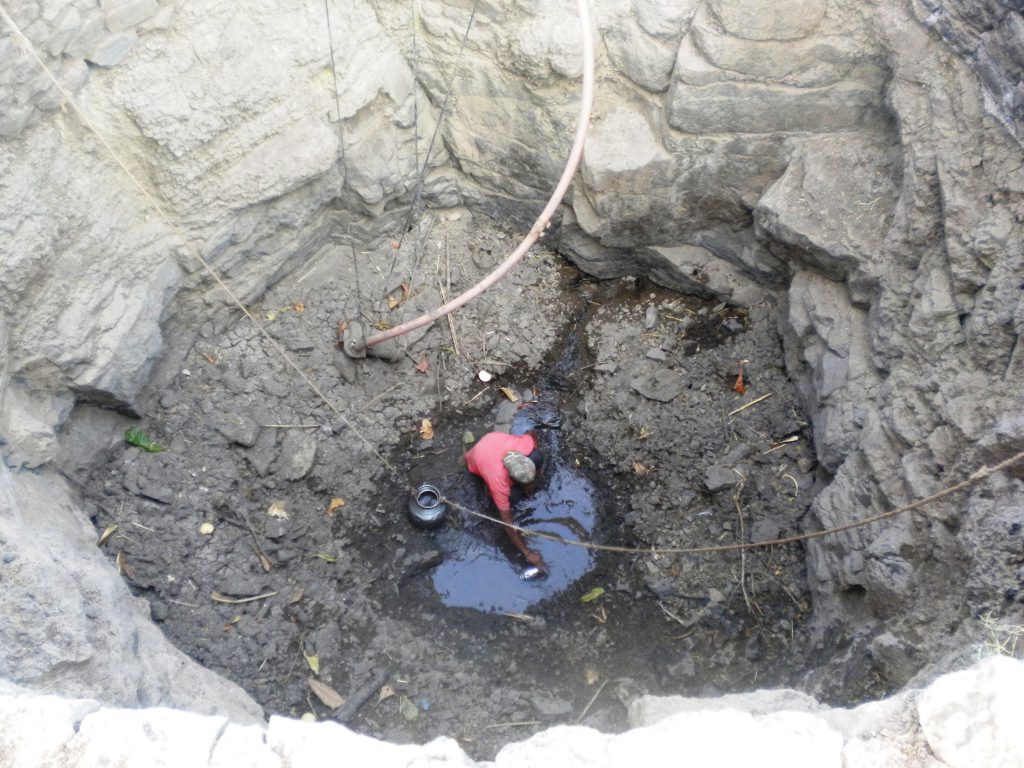
A Central Groundwater Board (CGWB, 2021) report reveals that about two-thirds of the total volume of extractable groundwater in India is already being pumped out. Per capita water availability has declined from over 5,000 cubic meters per year during independence to 1,545 cubic meters today, placing India in the water-stressed category. Projections suggest that by 2025 and 2050, per capita water availability will decline to 1,341 and 1,140 cubic meters, respectively. Effective water management and governance are crucial for India’s future.
India’s water crisis necessitates a shift in focus from simply increasing water supply to emphasizing effective water governance. Water governance encompasses the systems, institutions, policies, and decision-making processes that determine how water is managed and allocated. Inadequate water governance can exacerbate water scarcity, pollution, and conflicts among stakeholders. The Water Governance Standard (WGS) aims to address these challenges by promoting sustainable, equitable, and efficient management of water resources in rural India.
Why Focus on Water Governance?
There are several reasons why water governance is crucial in tackling India’s water crisis:
- Unsustainable and inefficient water usage: Inefficient irrigation practices, water-intensive crops, and increasing demand for water from various sectors have led to an unsustainable extraction of groundwater and surface water. Improved water governance can promote the adoption of water-efficient technologies, crop diversification, and demand management to address these challenges.
- Inequitable water distribution: Poor governance can result in unequal access to water resources among different social and economic groups. Adopting good governance practices ensures equitable distribution of water, enabling all stakeholders to benefit from water resources.
- Limited stakeholder participation: Effective water governance encourages the involvement of all stakeholders, including local communities, in decision-making processes. This inclusive approach can enhance the legitimacy of water-related decisions, promote transparency, and ensure that diverse perspectives are considered in water management.
- Climate change impacts: Climate change is exacerbating water-related challenges, such as changing rainfall patterns, increasing droughts, and floods. Robust water governance can help communities adapt to these changes by incorporating climate resilience into water management strategies.
- Intersectoral and transboundary conflicts: Water resources are shared among various sectors, such as agriculture, industry, and households, as well as across administrative boundaries. Effective water governance can facilitate coordination among stakeholders, minimize conflicts, and promote sustainable resource sharing.
- Protecting ecosystems: Poor water governance can lead to the degradation of ecosystems, impacting biodiversity and the environment. A holistic governance approach can ensure that water management practices are environmentally sustainable and maintain the health of ecosystems.
- Accountability and transparency: Water governance should promote transparency and accountability to minimize corruption and mismanagement. This can enhance trust among stakeholders and ensure that water resources are managed effectively and fairly.
What is the Water Governance Standard?
Developed by WOTR and W-CReS, with support from IDH, the Water Governance Standard (WGS) is a rating and certification methodology (or toolkit) that seeks to incentivize and nudge rural communities towards adopting water-smart attitudes and behaviours, while also attracting investments and benefits from funding agencies. The WGS evaluates how effectively rural communities manage and govern their available water resources, assigns a “water score,” and rates them at four levels: Bronze, Silver, Gold, and Platinum.
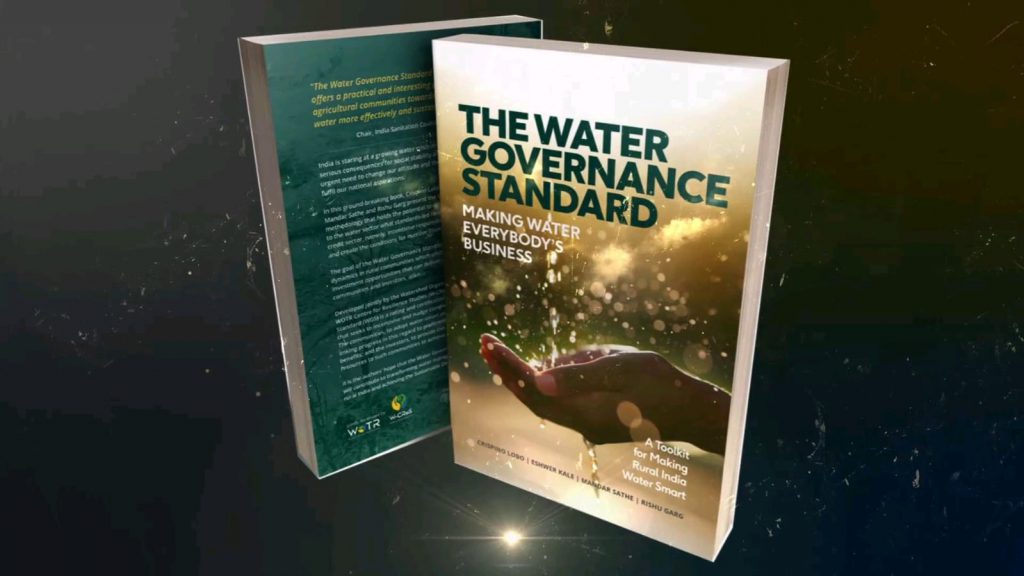
What is the underlying concept of the Water Governance Standard in addressing water challenges in rural India?
In rural India, large “water markets” exist where the demand for water investments exceeds available resources, creating competition. Water-stressed communities, the “consumers,” seek water-related investments, while investors or resource providers, the “suppliers,” look for opportunities with desired returns, be it financial, social, or otherwise.
This dynamic creates an opportunity to incentivize communities to make necessary changes, both behavioural and otherwise, to attract water investments. At the same time, it helps investors identify communities most likely to deliver the expected results. Assigning a “water score” to communities brings transparency and efficiency to these “water markets,” uncovers opportunities and risks, aligns communities and investors, and promotes strategies that incentivize sustainable outcomes.
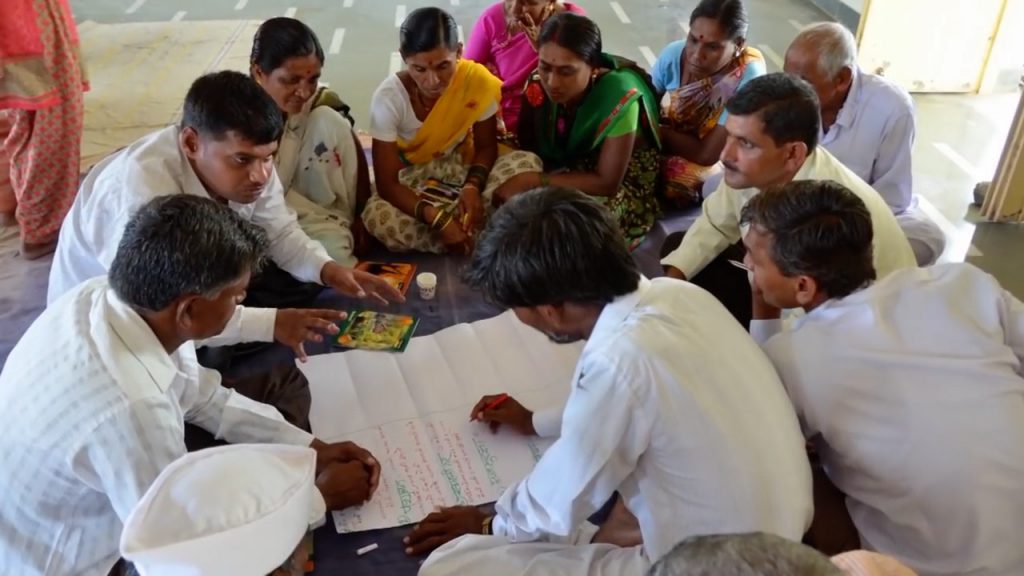
By addressing the core concerns of both stakeholders – opportunities or investments for communities and choices for investors – the Water Governance Standard (WGS) can help change water-related behaviours, direct resources to the water sector, and achieve sustainable water outcomes. Its transformative potential lies in the increased willingness of water-stressed communities to accept a certification process when they realize that higher “water scores” improve their chances of attracting needed water investments. In situations with limited funding and resources, projects with a high potential for success are more likely to attract funding than others.
What are the objectives of the Water Governance Standard?
The main objective of the WGS is to incentivize changes in the way we deal with and use water, both at the behavioural and institutional levels. Specific objectives include:
- Participatorily assessing the quality of water management in a community against a defined benchmark – the Water Governance Standard.
- Raising awareness and providing a pathway for communities to improve the overall quality of water management.
- Providing water stakeholders, investors, and resource providers a basis to identify opportunities and projects that are likely to be ‘successful’ and deliver expected outcomes.
- Offering a comprehensive framework to monitor, improve, and evaluate water projects in terms of performance and impact.
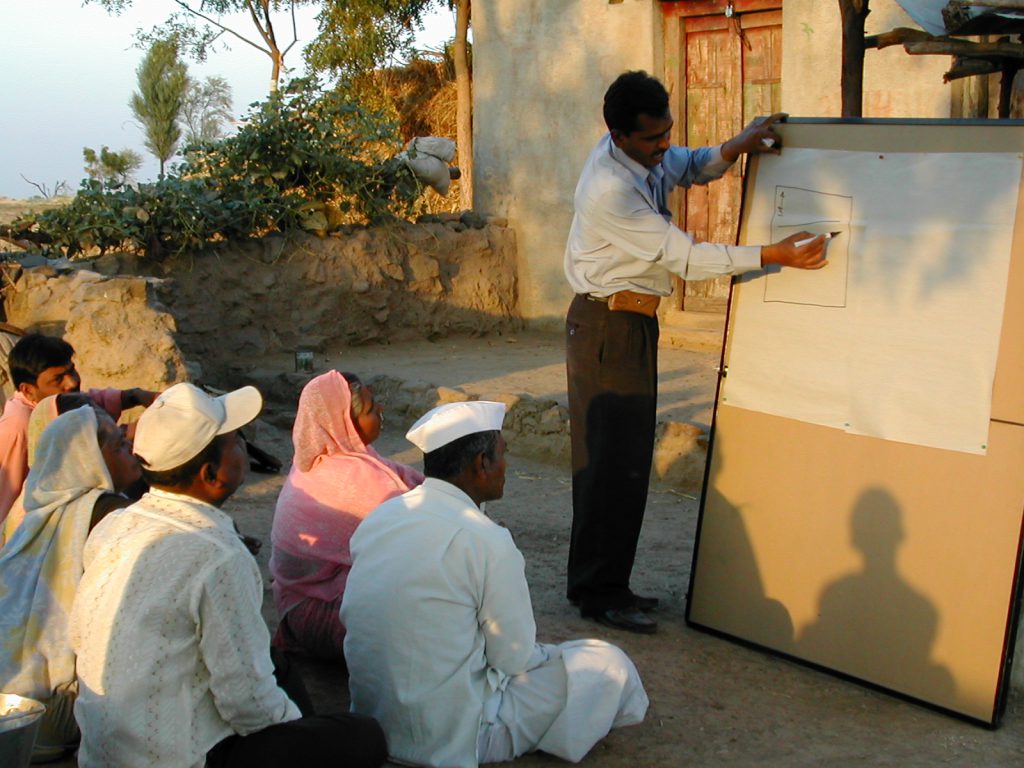
What are the Target Groups and Contexts?
The WGS can be beneficial for:
- Communities where agriculture is rainfed, and irrigation depends on access to groundwater, mainly drylands which include arid, semi-arid, and dry sub-humid areas.
- Communities dependent on rainfall and groundwater but having limited access to water from external sources.
- Water abundant areas that are substantially or perennially irrigated or have access to a reliable source of irrigation, such as dams and canals, but experience water stress.

What are the dimensions of the WGS Rating System?
The Water Governance Standard assesses communities based on the following dimensions:
- Water Availability and Quality
- Institutions, Representation, and Governance
- Water Supply and Demand Management
- Transparency and Accountability
- Equitable and Non-Discriminatory Access to Water
- Environmental and Ecosystem Sustainability
Communities are rated as Bronze, Silver, Gold, or Platinum based on a composite score of 100 points. The supply-side component has 45 points, while the other dimensions together have 55 points. While villages with scores below 50 points will not qualify for a rating, the WGS rating process highlights areas that require improvement. By addressing these shortcomings and developing a remediation action plan, villages can become eligible for investments and boost their water scores. The WGS does not intend to address basic water needs for humans and animals, as these should be provided through publicly funded programs or other means, recognizing water as a fundamental right.
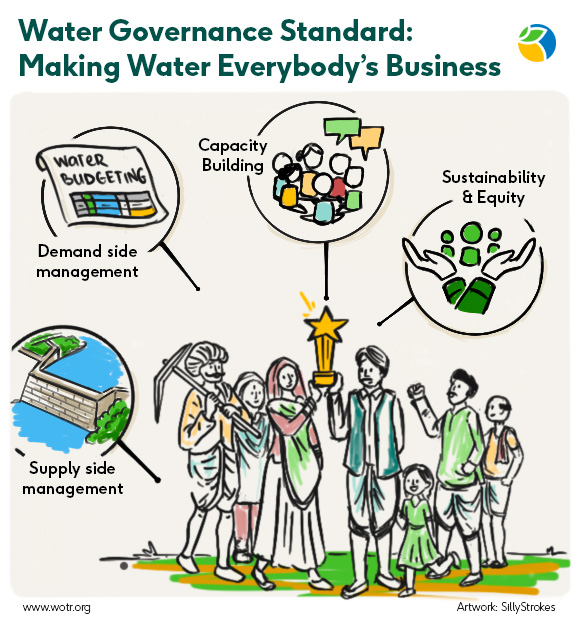
Instead, the goal of the WGS is to foster a shift in mindset toward responsible and efficient water management, ensuring sustainable, equitable access to water resources and preserving natural ecosystems. By applying the WGS to funding from various sources such as government, public, CSR, and donors, communities can address the increasing demands for water in the face of limited financial resources and availability.
What are the benefits for Communities and Investors?
The WGS offers multiple benefits for both communities and investors:
- For communities, it provides a transparent evaluation of their water management practices, helping them identify areas for improvement and adopt sustainable behaviours.
- For investors, it offers a risk assessment tool, enabling them to identify projects with a high potential for success and align their investments with sustainable water outcomes.
Addressing India’s water crisis requires a paradigm shift from focusing solely on water resources development to emphasizing water governance. The Water Governance Standard is a critical tool in this endeavour, incentivizing rural communities to adopt water-smart attitudes and behaviours while attracting investments for sustainable water outcomes. By fostering a culture of efficient, equitable, and sustainable water use, the WGS can contribute significantly to resolving India’s water crisis and ensuring a water-secure future for millions of people.
Read more here: https://wotr.org/2023/02/18/the-water-governance-standard-launch/





